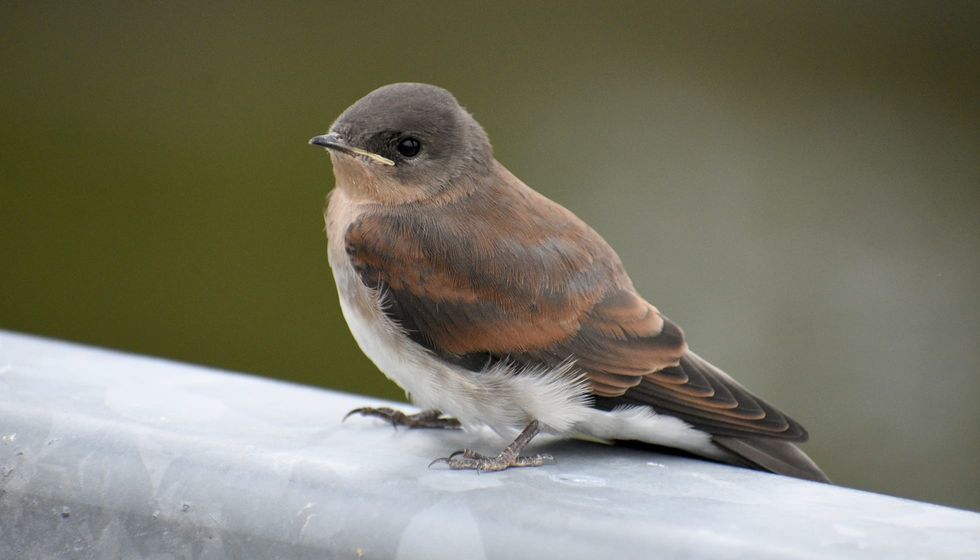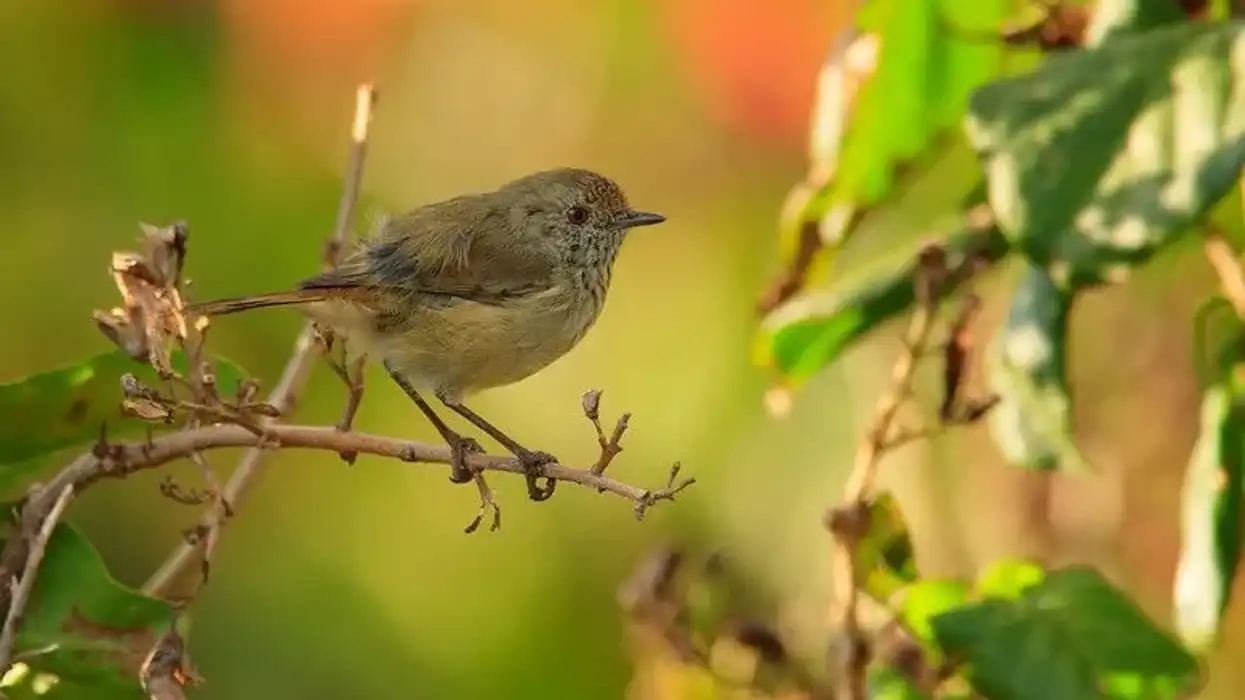Northern rough-winged swallow (Stelgidopteryx serripennis) is regarded as the plainest swallow species in North America. The name rough-winged alludes to the small serrations on the wing feathers' outermost edges.
Adults are brown on top, with a white abdomen and a buffy neck and upper breast. Juveniles are identical to adults but have reddish-brown wing-bars. Northern rough-winged swallows and bank swallows are similar, but bank swallows have prominent breast bands and whitethroats.
Here are some interesting facts on Northern rough-winged swallow (Stelgidopteryx serripennis) for your perusal. Hereafter, you can also check our other fact files on North American birds, such as white-rumped swallow and Java sparrow.
Northern Rough-Winged Swallow Interesting Facts
What type of animal is a Northern rough-winged swallow?
Northern rough-winged swallow (Stelgidopteryx serripennis) is a bird that is of the family Hirundinidae. This species is found during winters in Mexico and Central America. This bird species has gotten its name from the tiny serrations on its outer wing feathers.
What class of animal does a Northern rough-winged swallow belong to?
Northern rough-winged swallow (Stelgidopteryx serripennis) belongs to the bird class of the Animalia kingdom. These North American birds migrate from their natural habitat near water bodies in North America and spend their winters in Mexico and Central America, along with southernmost Florida.
How many Northern rough-winged swallows are there in the world?
The Northern rough-winged swallow bird is expected to have around 15 million individual birds, indicating that it is not threatened under the population size criterion. Once this bird was limited to natural nest sites along natural cavities and stream erosion banks, but now the nest sites can be found in urban regions as well.
Where does a Northern rough-winged swallow live?
Northern rough-winged swallows are typically found at lower elevations near water, particularly along sandy, coastal cliffs or rivers with high, sandy banks and adjacent open spaces.
What is a Northern rough-winged swallow's habitat?
Northern rough-winged swallow bird forages from the air, flying low over open water, pastures, and small gullies. This bird species forages over water more than other swallows and occasionally takes food from the surface.
They often build their nests in man-made banks. They are the most common bank-nesting swallows in western Washington. Their habitat overlaps nearly entirely with that of bank swallows in eastern Washington, while bank swallows are more restricted.
Who do Northern rough-winged swallows live with?
Northern rough-winged swallows live in groups with other birds from similar species.
How long does a Northern rough-winged swallow live?
A Northern rough-winged swallow can live up to 5-7 years. When a male Northern rough-winged swallow was recovered and re-released in California, he was at least five years, 11 months old.
How do they reproduce?
Northern rough-winged swallows build their nests in burrows dug by other animals. This bird species builds its nests in gutters, boxes, drainpipes, walls, and bridges.
Several pairs of Northern rough-winged swallow nest close to each other but, unlike the bank swallow, do not breed in large colonies. A twiggy nest is constructed by both the male and female towards the end of the burrow.
After the mating process is over, the female lays between 5-7 eggs, wherein the incubation takes around 12-16 days. Both parents feed the young birds, who leave the nest after 20 days.
What is their conservation status?
The IUCN classifies the Northern rough-winged swallow as the least concern. Although its population is dropping, it is not dropping quickly enough, nor is its range narrow enough to merit a vulnerable categorization.
Northern Rough-Winged Swallow Fun Facts
What do Northern rough-winged swallows look like?
Northern rough-winged swallows are little birds with long bodies and a tiny head and beak. They fly on long, pointed wings that are rather large and wide.
They have a completely brown upper body with a dingy neck and chest that fades to white. Both sexes have a similar appearance. Juveniles are similar to adults but have cinnamon wing bars.

*Please note that this is an image of Tree swallows belonging to the same family as Northern rough-winged swallows. If you have an image of a Northern Rough-Winged Swallow, please let us know at hello@kidadl.com.
How cute are they?
They look cute in still positions and also when they flap their wings to fly in the sky. As a matter of fact, a Northern rough-winged swallow in flight looks incredibly cute and endearing.
How do they communicate?
Northern rough-winged swallows communicate with one another through food-begging and feeding calls. Parents know their own children's cries. When they spot a predator, bank swallows will make warning and alarm cries. Males sing to promote their territory and to attract females for mating. Songs sound like 'cher-che-che -che', repeated till they sound chattering.
How big is a Northern rough-winged swallow?
The Northern rough-winged swallow is three times bigger than the bee hummingbird. An average Adult Northern rough-winged swallow is 5.1–5.9 in (12.9-14.9 cm) long and has a wingspan of 11-12 in (27.9-30.4 cm).
How fast can a Northern rough-winged swallow fly?
Northern rough-winged swallows can fly up to a speed of 30-40 mph (48.2-64.3 kph).
How much does a Northern rough-winged swallow weigh?
A Northern rough-winged swallow bird weighs around 0.35-0.56 oz (9.9-15.8 g).
What are the male and female names of the species?
There is no specific name for male and female Northern rough-winged swallows. They are known as male Northern rough-winged swallow and female Northern rough-winged swallow.
What would you call a baby Northern rough-winged swallow?
There is no specific name for a baby Northern rough-winged swallow. Hence they are known as nestlings. Like other similar species, both the parents feed the nestlings after hatching from the eggs, who leave the nest after 20 days.
What do they eat?
The Northern rough-winged swallow is a species of swallow that feeds on flying insects. Many flies, wasps, winged ants, bees, real bugs, and beetles are among the flying insects on which it feeds. This species also feeds on moths, caterpillars, mayflies, damselflies, and spiders.
Are they aggressive?
No, they are not an aggressive bird species.
Would they make a good pet?
No, these birds cannot be kept as a pet as their habitat is not suitable to live in a home. They are best left in the wild amidst their natural habitat.
Did you know...
Swallows are excellent fliers, especially the Northern rough-winged swallow, which, unlike other birds, molts parts of its feathers while flying.
It takes these birds around 100 days to complete the process of generating new feathers.
Threats to the Northern rough-winged swallow
Northern rough-winged swallows’ main threat is that they may be affected by climatic changes. Climate change will impact how many and what type of insects are available for them to feed on. As a result, the habitat range of these swallows will also be altered according to the presence of insects for them to prey upon.
Comparisons with similar birds
Northern rough-winged swallows can be confused with bank swallows, but bank swallows have distinct breast-bands and whitethroats, with some white wrapping back to their ears. Northern rough-winged swallows have shorter tails than those of bank swallows.
Northern rough-winged swallow swallows are strikingly similar to female Purple Martins, but their tiny size and square, rather than notched, tail assist in distinguishing them.
Here at Kidadl, we have carefully created lots of interesting family-friendly animal facts for everyone to discover! For more relatable content, check out these olive sparrow facts and red-throated loon facts pages.
You can even occupy yourself at home by coloring in one of our swallow birds coloring pages.









